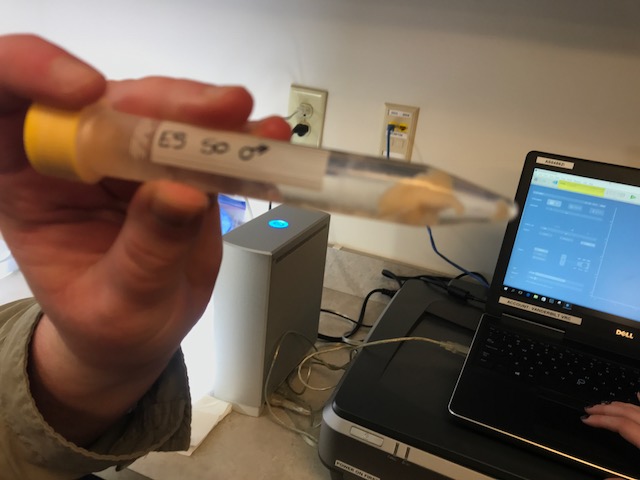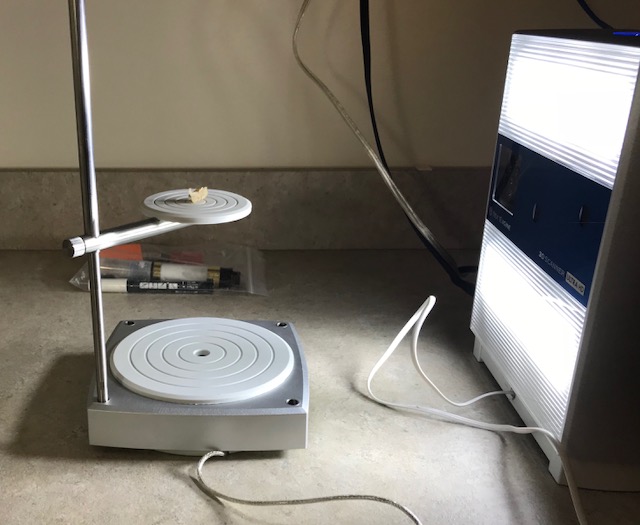Home » Digital Humanities » Neuroscientist Uses the VRC’s 3D Scanner for Science Outreach and Research
Neuroscientist Uses the VRC’s 3D Scanner for Science Outreach and Research
Posted by vrcvanderbilt on Thursday, December 14, 2017 in Digital Humanities, HART, News, Technology, VRC.
 Alexandra Wright, a post-doctoral scholar in the lab of neuroscientist Suzana Herculano-Houzel, the Departments of Psychology and Biological Sciences, recently visited the HART Department’s Visual Resources Center to learn more about our 3D scanner and to scan the brain of an elephant shrew, a small insectivorous mammal native to Africa—certainly the smallest object the VRC has ever 3D scanned. The Herculano-Houzel lab actually has a collection of more than 200 animal brains that they are interested in scanning with lasers to generate 3D printed models. The lab also plans to scan blocks of tissue to assess shrinkage following tissue preparation.
Alexandra Wright, a post-doctoral scholar in the lab of neuroscientist Suzana Herculano-Houzel, the Departments of Psychology and Biological Sciences, recently visited the HART Department’s Visual Resources Center to learn more about our 3D scanner and to scan the brain of an elephant shrew, a small insectivorous mammal native to Africa—certainly the smallest object the VRC has ever 3D scanned. The Herculano-Houzel lab actually has a collection of more than 200 animal brains that they are interested in scanning with lasers to generate 3D printed models. The lab also plans to scan blocks of tissue to assess shrinkage following tissue preparation.
“We are interested in using 3D printed brains to educate the public about brain  diversity and evolution, with these models being incorporated into interactive outreach activities at Vanderbilt and local Metro Nashville Public Schools,” said Wright. “We would like to make printable files of these brains available online for teachers, students, and the public at large.”
diversity and evolution, with these models being incorporated into interactive outreach activities at Vanderbilt and local Metro Nashville Public Schools,” said Wright. “We would like to make printable files of these brains available online for teachers, students, and the public at large.”
Photographs courtesy of Millie Fullmer

©2025 Vanderbilt University ·
Site Development: University Web Communications